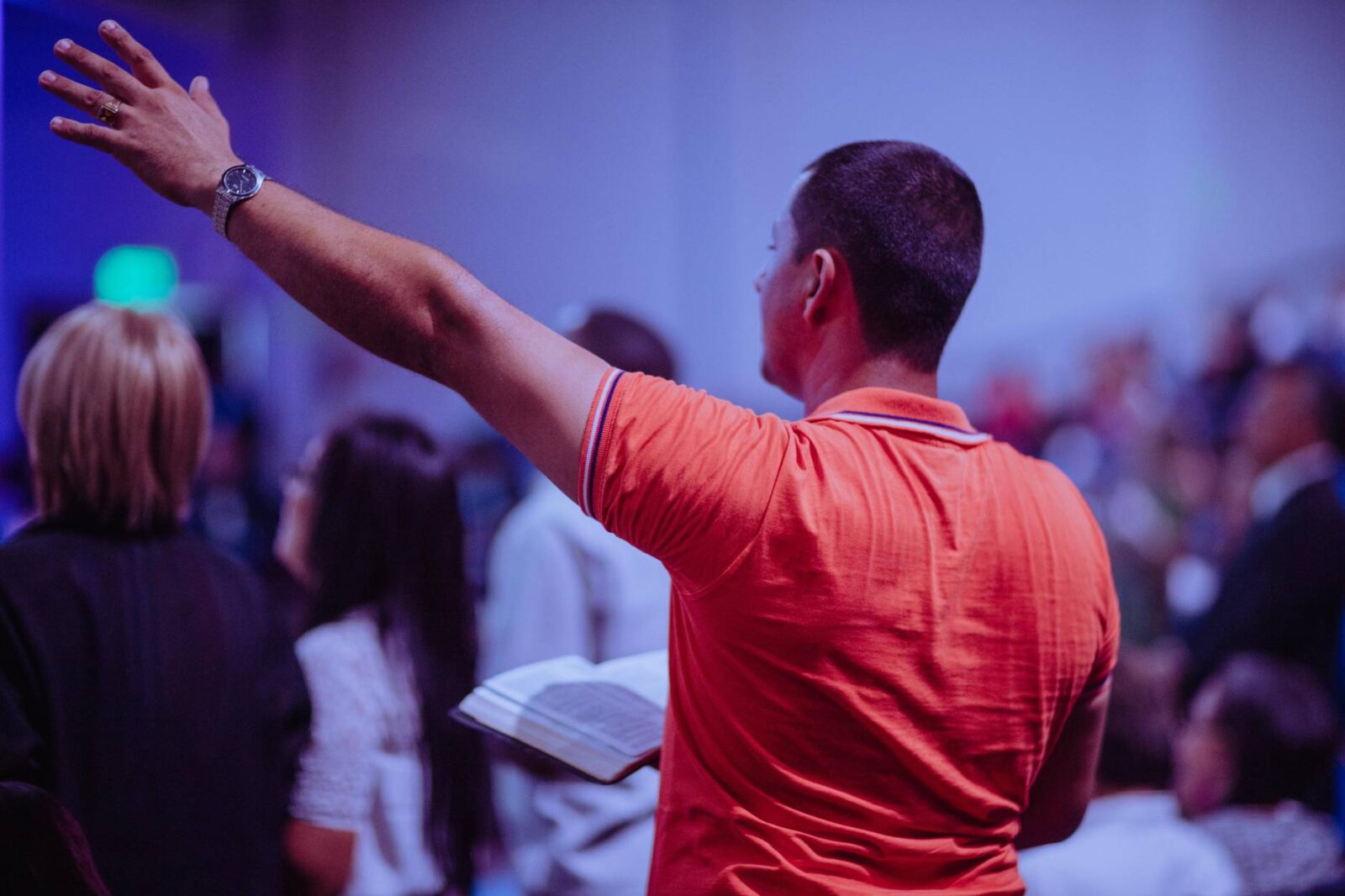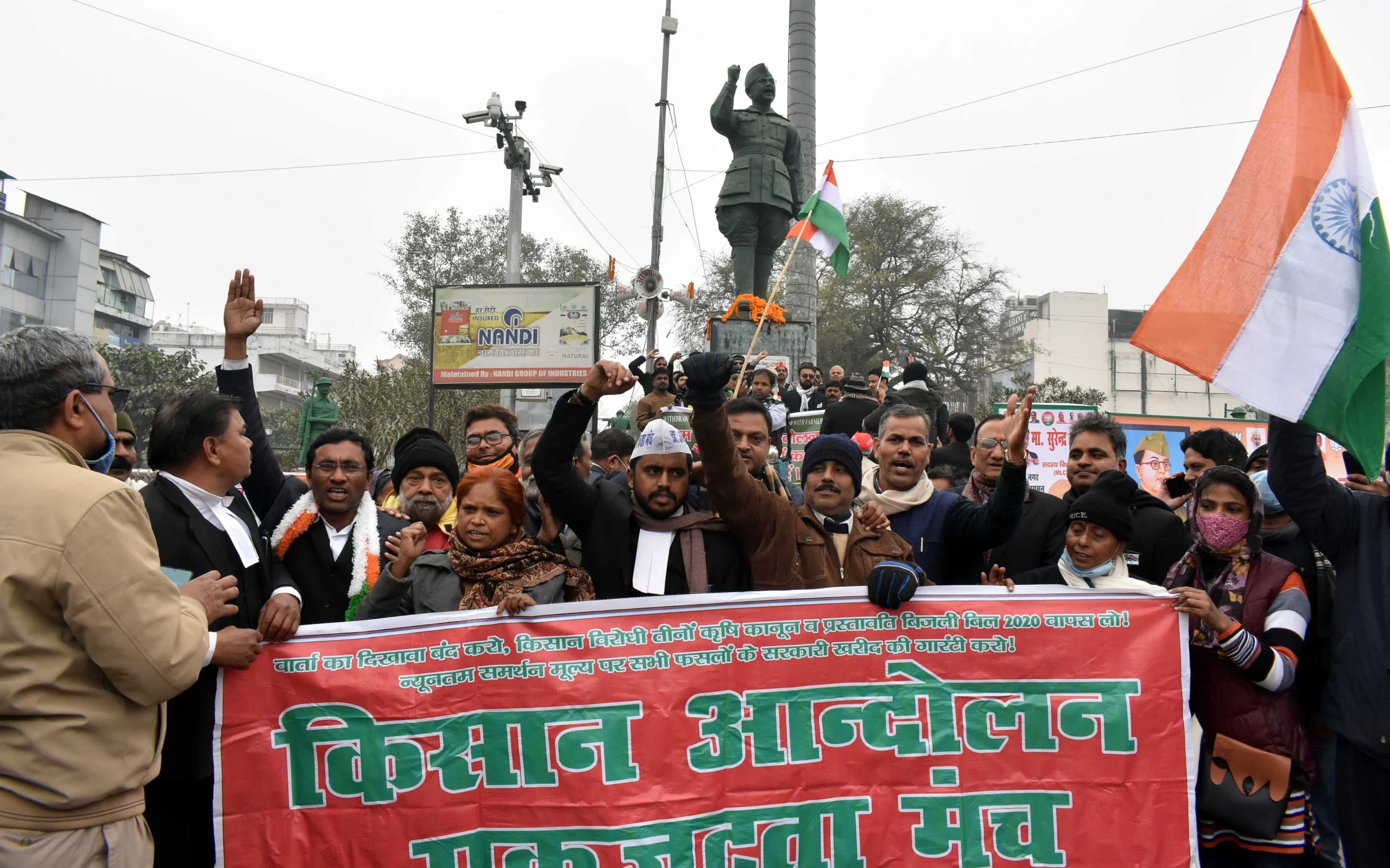Religion in India: A Tapestry of Faiths and Cultural Diversity
The concept of God is cool and funny at the same time. It’s a huge business in India and a serious thing to follow. You go against or speak against it and you will have a bad rest of the year. God may or may not punish you but the people will. Religion in India is Orgasmic AF.
Spoiler Alert: Do not talk about religion in India.
Table of Contents
Religion Meaning (Google)

One of India’s major problems is Religion and we all know it well but you may even get killed if you question the faith. We’ve fought over this topic over and over and are still fighting about it.
India, with its rich tapestry of traditions and diverse cultural heritage, is a land where religion occupies a central place in the lives of its people. The main religion in India, with a significant majority, is Hinduism. Hinduism has deep roots in the country and is intertwined with its history, customs, and social fabric. However, India is also home to various other religions, each contributing to the religious diversity that characterizes the nation.
Caste and religion in India have long been interconnected. The caste system, a social hierarchy based on birth and occupation, has influenced religious practices and traditions in the country. While Hinduism is the dominant religion, caste divisions have created distinct subgroups within the Hindu community, leading to variations in religious rituals and practices among different castes.
India, with its vast population, is home to multiple religions. Apart from Hinduism, other major religions practiced in the country include Islam, Christianity, Sikhism, Buddhism, Jainism, and Zoroastrianism. Each religion brings its own unique set of beliefs, rituals, and customs, contributing to the vibrant religious landscape of India.
In terms of percentages, Hinduism constitutes the largest religious group in India, with approximately 79.8% of the population identifying as Hindus according to the 2021 census data. Islam follows as the second-largest religion, with around 14.2% of the population being Muslims. Christianity, Sikhism, Buddhism, Jainism, and other religions make up the remaining percentage, illustrating the diverse religious composition of the nation.

While Hinduism remains the majority religion in India, there are notable trends in the religious landscape. Islam, for example, is considered the fastest-growing religion in the country due to factors such as population growth and conversion rates. Christianity also continues to grow steadily, particularly in certain regions of India.
Religion in India is not just a matter of faith but is deeply intertwined with the country’s cultural fabric. Indian religion and culture are inseparable, as traditions, festivals, and rituals play a vital role in shaping the social and communal life of its people. From Diwali, the festival of lights celebrated by Hindus, to Eid, the Islamic festival marking the end of Ramadan, India showcases a harmonious coexistence of diverse religious practices and celebrations.
Tolerance and segregation have been a part of India’s religious narrative. India has a long history of religious diversity and has been known for its pluralistic ethos, with people of different religions coexisting and respecting each other’s faiths. However, at times, instances of religious tensions and conflicts have arisen, highlighting the need for continuous efforts to promote religious harmony and understanding.
Religious freedom is enshrined in India’s constitution, which guarantees every citizen the right to profess, practice, and propagate their religion. This constitutional provision reflects the country’s commitment to preserving religious diversity and ensuring the protection of minority communities.
When looking at the future, projections indicate that the religious composition of India will continue to evolve. The population of various religions is expected to experience shifts in the coming years. However, it is essential to approach these projections with caution, as demographic trends can be influenced by various factors, including birth rates, migration patterns, and social dynamics.
India’s religious landscape is not static; it is deeply intertwined with politics and society. The intersection of religion and politics in India can sometimes lead to complex dynamics, with religious identities influencing voting patterns and political discourse. However, the country’s democratic framework and secular principles provide a framework to ensure the peaceful coexistence of diverse religious communities.
To gain a better understanding of the religious demographics in India, it is crucial to consider reliable data. The population of religions in India is regularly assessed through census surveys.
The latest available data from the 2021 census provides valuable insights into the religion-wise population in India. The census not only captures the current distribution but also serves as a reference point for analyzing historical changes and projecting future trends.
In 1947, during the partition of India and Pakistan, the religious landscape underwent a significant transformation. India witnessed the division of territories along religious lines, leading to large-scale migrations and communal tensions. The partition resulted in the creation of a separate Muslim-majority nation, Pakistan, while India remained a secular country with a diverse religious composition.
Since then, India has strived to maintain a delicate balance of religious harmony and freedom. The Constitution of India guarantees individuals the freedom to choose their religion and practice it without interference. This commitment to religious freedom has allowed diverse faiths to flourish and coexist within the country.
Looking ahead, projections for the religious population in India by 2050 suggest continued growth and changes. However, it is essential to approach these projections with caution, recognizing the complex interplay of demographic, social, and cultural factors. As India undergoes urbanization, modernization, and globalization, these factors can influence religious dynamics, potentially leading to shifts in the religious landscape.
It is worth noting that while religion is a vital aspect of Indian identity, it is not the sole determinant of an individual’s beliefs and values. Indian society embraces a myriad of cultural influences, philosophies, and worldviews that extend beyond religious affiliations. This interplay between religion and culture contributes to the unique fabric of Indian society, fostering a sense of unity amidst diversity.
Religion in India is not limited to the spiritual realm; it permeates every aspect of life, from family rituals to social norms and political discourse. It is a subject of intellectual inquiry, artistic expression, and social cohesion. India’s religious plurality is evident in the architectural marvels of temples, mosques, churches, and gurudwaras that dot the landscape, serving as symbols of collective faith and devotion.
While India’s religious diversity is a source of strength and cultural richness, it also poses certain challenges. Ensuring religious harmony, countering religious discrimination, and addressing issues of social inequality based on caste and religion require continuous efforts and dialogue. It is essential for individuals, communities, and policymakers to promote interfaith understanding, tolerance, and respect to build a harmonious society.
As we explore the religious tapestry of India, it is important to appreciate the intricate mosaic of beliefs, practices, and traditions that shape the lives of millions. India stands as a testament to the coexistence of different religions, where spirituality transcends boundaries, and diversity becomes a unifying force.
We’ve released movies with messages showing how politicians use religion in India to manipulate people and save their vote banks. And yet we still end up fighting and following the same path.
People get converted for money, food, and other means of livelihood. Religious conversion in India is very common and works with almost all communities. It’s as simple as porting in your number to a new cell phone network for better coverage.
The current political situation is even weirder. If you speak against the current government in power, you are speaking against Hinduism and hence do not deserve to live in India.
You are also an anti-national, terrorist, jihadi Muslim (even if you’re a Gujarati or Bengali) and deserve to be hated. Try it! Muslims getting married to Hindu girls in India is known as love jihad.
Religion is the most trusted concept which is told in different patterns and storybooks mostly driven to achieve the same goal. Even the definitions suggest it’s a complicated and controversial subject – in other words, may cause harm to you if you speak or go against it – since it’s also mentioned in the storybooks.
These are also known as holy books. The stories have a lead character or a hero with superpowers (like David Blaine or Chris Angel) usually God himself or someone sent by God. They can do miracles like walking on water or flying in the sky. There is sometimes also a debate around what religion in India should dominate concluding to terrorism at times. Not Kidding!
Guys! How to register a new Religion in India?
— Kritika Sen (@kritikaseen) August 23, 2020
Considering the present total world population today we have around 33 million gods only for Hindus and the rest of the minor religions have their own lead characters to worship.
We’re open to more additions and can worship anyone who can make us feel they’re God unlike the People who are dying of hunger and there is also a good amount of food wasted in the name of marriages while that happens, but we still focus on building churches, mosques, and temples around the world with the money we have so the storybooks can be justified.

Bollywood, Cricket, and Other Gods
Usually, the lead characters in the stories used to be the ones to decide the name of the Religion and make it viral so others could follow and believe what they said. But recently, this changed when we adopted a new Religion for our kitty which was not created by India but by another country but it doesn’t matter.
The name of the Religion in India was Cricket as founded by the British and the lead character or the God of the Religion was felicitated to Sir Donald Bradman by them which changed to Sachin Tendulkar in India for being genius for creating records. Just for the record, the rest of the world still calls it a Game. Ridiculous!
There is another one called the Indian film industry or Bollywood who claims themselves to be actors and yet get to be the Gods in real life. For e.g. Rajnikant has temples built by people in his name in Karnataka in the south of India.
They even light candles, and diyas, and dance in front of the big screens on the first day of his entry in every movie. Amitabh Bachchan has a similar temple built in Kolkata and it remains open 24/7 for the devotees. There are more humans, oops, Gods that are worshiped for whom the temples weren’t only built but also demolished and I’ll do a separate article on that.
Who did this?
Let’s take a step back and think about it. How did this happen and how did we let it happen? There are Atheists in the world who are confident of no existence of God. There are reliable and trustworthy personalities in the list of atheists that are firm about their decisions and hence atheism is also accepted by all religions.

China in this regard has 5 official religions only. Any other religion is banned. So if you want to live there or are a citizen, you have to follow the religion in China or get thrown out. Those five religions are Buddhism, Catholicism, Daoism, Islam, and Protestantism.
The last one by the way is Catholic but they kind of protest being Roman Catholics, so they were named protestants. Religion names can be amended based on requirements and are very flexible. Basically, the religion of China is cool. They have no clue how many religions in India.
What If?
Looking at it in a different manner, Religion in India is nothing more than a law and order book. It shouldn’t be taken anything more than that. Like around a couple of thousand years ago, there were no rules, no boundaries, no roads, and most importantly no technology. Everything discovered by us was new and fragile.
There was no testing before the release like we make sure we do now. There was no curiosity for the outcome and as we can imagine the amount of chaos and misunderstandings that may have taken place at the time.
After a point, there would be rules that you’d have to put into practice so everyone follows and doesn’t screw up otherwise. This is how the religions in the world came into existence.
Never understood how in a same religion, in India they celebrate Navaratri with all Fast and being strictly vegetarian in these 9 days,but in Nepal we celebrate by eating so much of Meat products and all!How come this difference in the same festival and religion in two countries?
— Nishan (@Nishan_LFC) October 22, 2020
The rules were laid and called the 10 commandments and something else by some other smart godmen during the earlier centuries. For example, the Bible calls these rules the 7 sins.
Those are pride, envy, gluttony, greed, lust, sloth, and wrath. Other religions have additional sins basically meaning the same as rebellion against God. If you do those things you’ll burn in hell when you die. Hopefully, that will scare the shit out of you.
Those rules were helping and people could see it, following them made their lives easier and more secure. There were always going to be non-followers, instigators, and troublemakers that wouldn’t want those laws in place.
During a time when any creation or innovation and its outcome was believed to be nothing less than magic. When it comes to driving a new task, the government currently takes every effort to make sure we follow every step, and it’s a similar drive at our offices in order to achieve our defined goals.
A few smart men decided to create a concept of Religion in India that would have all of them on their toes by laying down certain laws and regulations that had to be followed because it has come by some supernatural power that created those magical outputs through innovations.
If the laws were not followed or were intentionally broken, they were going to face the heat. By the way, the concept of reincarnation and life after death, etc is also a part of the crap they introduced during those years, I’ve shared my thoughts in this other article where I talk about it in detail.
With time, the concepts were updated, and newer versions of those documents were introduced with amendments in the regulations based on how people behaved. Soon, the concept of heaven and hell was also suggested based on the questions about life and death.
These writers were finding newer people to tell them about the rule book and the updates on what was changed as a message from the superpower above. These people were hence accepted as the messengers of Gods and eventually even as Gods.
The messages were then drained down the hierarchy of the family as suggested by the Gods which slowly became a Chinese whisper over the years and indeed more robust and stringent.

I’m not aiming at a particular religion but run your religion in the above story and you’ll know what you are learning now may not be as important 50 years later as it is today and definitely not 100 years later. That is also common sense. I come across people who want to protect their God and their religion.
What we happen to do unknowingly is pass on the same ritual/culture etc. without knowing if it is really needed or if your kids even want it. It was required when there were no laws, police, or army.
We’ve come 2000 years ahead in time from where it all started and we still kill and marry based on Religion and Caste. There is no love – There is no God. If it’s not my culture|if it’s not my religion|if it’s not my caste|if it’s not my ritual – it must be wrong or the other religion is stupid.
Religion in India is also a major reason because of why the Dalits are still not appreciated and looked at as backward. We question and judge people and their upbringing on this basis.
India took an additional step during those years which I can write another article of 500 words on – Caste. Seriously? Who gave us the right to judge a human based on Religion, Caste, Creed, or Color? Guess What? We did. Remember, those years, Regulations, Drive, and the hierarchy and then the Chinese Whisper in the family.
If noise pollution is the issue, none of the religions should be allowed to use loudspeakers
— Varun (@airravata) August 25, 2020
The Concept Of religion is stupid. It’s purely up to us how this needs to be taken ahead. It’s not only in our hands but in our minds – to either teach our children the importance of a higher caste vs a lower caste or the importance of humanity and maybe even quantum physics.
Will it be important to be Lineal or since we have only this one life, it will make more sense to just be human and help? No Religion, No Fights. I want to know your thoughts and even debates about the topic. Also, consider sharing the article if you think it’s worth it.
Religion plays a significant role in Indian society, and it has been an essential part of the country’s cultural fabric for thousands of years. India is a diverse country with multiple religions coexisting, and each religion has its unique beliefs, practices, and traditions. In this article, we will explore the various religions in India and their significance in the country’s social, cultural, and political landscape.

Hinduism:
Hinduism is the oldest religion in India and is also one of the world’s oldest religions. It has a vast following in India and is considered to be one of the most diverse religions in the world. Hinduism is based on the idea of karma, dharma, and moksha. The religion has many gods and goddesses, and each deity is associated with a particular attribute or quality.
In India, Hinduism has a significant influence on society and culture. It is the dominant religion in the country and is intertwined with the daily lives of Indians. Hindus celebrate many festivals throughout the year, including Diwali, Holi, and Dussehra. Temples and shrines dedicated to Hindu deities can be found in every corner of the country, and pilgrimages to these sites are common.
Buddhism:
Buddhism is another major religion in India and has a significant influence on the country’s cultural and social fabric. The religion originated in India and spread to other parts of the world, including China, Japan, and Southeast Asia. Buddhism is based on the teachings of Siddhartha Gautama, who is also known as the Buddha.
In India, Buddhism has a significant influence on the country’s history and culture. The religion has many followers, and its teachings are integrated into Indian society. Many of India’s ancient Buddhist sites, including Sanchi and Bodh Gaya, are considered to be some of the most important Buddhist sites in the world.
Islam:
Islam is the second-largest religion in India and has a significant influence on the country’s cultural and social fabric. The religion originated in the Arabian Peninsula and was introduced to India by Arab traders in the seventh century. Today, there are over 200 million Muslims in India, making it one of the largest Muslim populations in the world.
In India, Islam has a significant influence on the country’s history and culture. The religion has many followers, and its teachings are integrated into Indian society. Muslims in India celebrate many festivals throughout the year, including Eid al-Fitr and Eid al-Adha.
Sikhism:
Sikhism is another major religion in India and has a significant influence on the country’s cultural and social fabric. The religion originated in the Punjab region of India and was founded by Guru Nanak in the 15th century. Today, there are over 20 million Sikhs in India, making it one of the largest Sikh populations in the world.
In India, Sikhism has a significant influence on the country’s history and culture. The religion has many followers, and its teachings are integrated into Indian society. Sikhs celebrate many festivals throughout the year, including Guru Nanak Jayanti and Baisakhi.
Jainism:
Jainism is another major religion in India and has a significant influence on the country’s cultural and social fabric. The religion originated in India and was founded by Mahavira in the 6th century BCE. Today, there are over 4 million Jains in India.
In India, Jainism has a significant influence on the country’s history and culture. The religion has many followers, and its teachings are integrated into Indian society. Jains celebrate many festivals throughout the year, including Mahavir Jayanti and Diwali.
Zoroastrianism:
Zoroastrianism is a minor religion in India and has a relatively small following. The religion originated in ancient Persia and was introduced to India in the 8th century. Today, there are fewer than 100,000 Zoroastrians in India.
In India, Zoroastrianism has a significant influence on the country’s history and culture. The religion has many followers, and its teachings are integrated into Indian society. Zoroastrians celebrate many festivals throughout the year, including Navroz and Khordad Sal.
Christianity:
Christianity is a minority religion in India and has a relatively small following. The religion was introduced to India by European colonizers in the 16th century. Today, there are over 28 million Christians in India.
In India, Christianity has a significant influence on the country’s history and culture. The religion has many followers, and its teachings are integrated into Indian society. Christians in India celebrate many festivals throughout the year, including Christmas and Easter.
Significance of Religion in India:
Religion has played a significant role in Indian society for thousands of years. It has shaped the country’s social, cultural, and political landscape and has been a source of inspiration for many Indians. Religion in India is not just a matter of personal belief but is also deeply intertwined with the country’s history, culture, and society.
Religion in India has helped foster a sense of community and belonging among different groups of people. It has also provided a sense of identity and purpose for many Indians. Religion in India has also helped promote social harmony and tolerance among different religious communities.
Religion in India has also had a significant impact on the country’s political landscape. Political parties in India often use religious symbols and rhetoric to mobilize voters. Religion has also been a source of conflict and tension in India, with communal violence erupting between different religious communities at times.
Conclusion:
Religion in India is a complex and multifaceted phenomenon. It has played a significant role in shaping the country’s social, cultural, and political landscape and has been a source of inspiration for many Indians. The different religions in India have contributed to the country’s rich cultural heritage and have helped promote social harmony and tolerance among different religious communities.
Religion in India is a multifaceted phenomenon, deeply ingrained in the country’s history, culture, and social fabric. Hinduism remains the main religion, but India is also home to various other religions, each contributing to the nation’s religious diversity. While challenges and complexities exist, India’s commitment to religious freedom, pluralism, and secularism lays the foundation for a society that celebrates its religious tapestry while striving for unity and understanding.
Religion in India has also had its share of problems, with communal violence and tensions erupting between different religious communities at times. However, despite these challenges, religion in India continues to be an essential aspect of Indian society, and its influence is likely to remain strong in the years to come.




